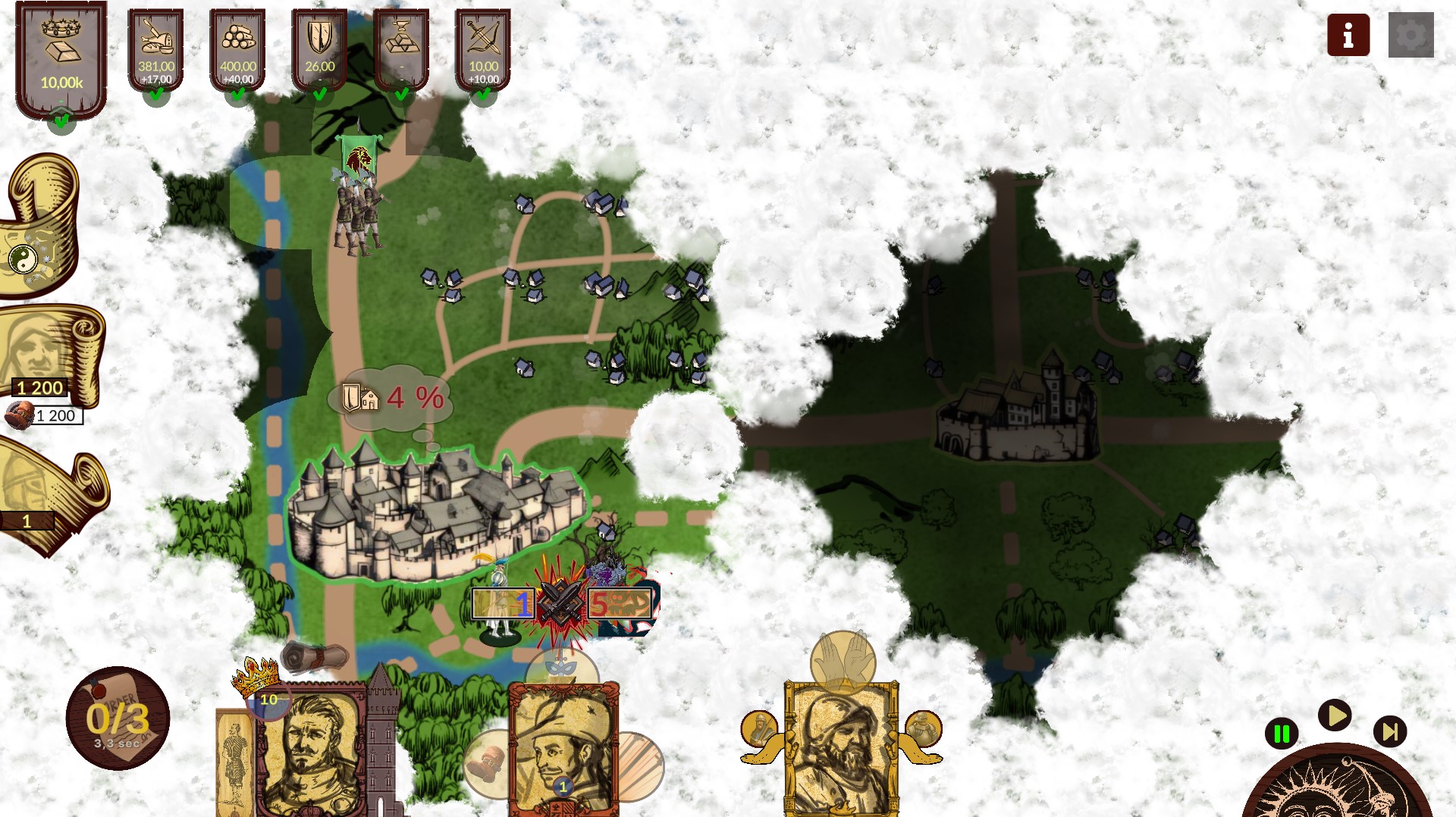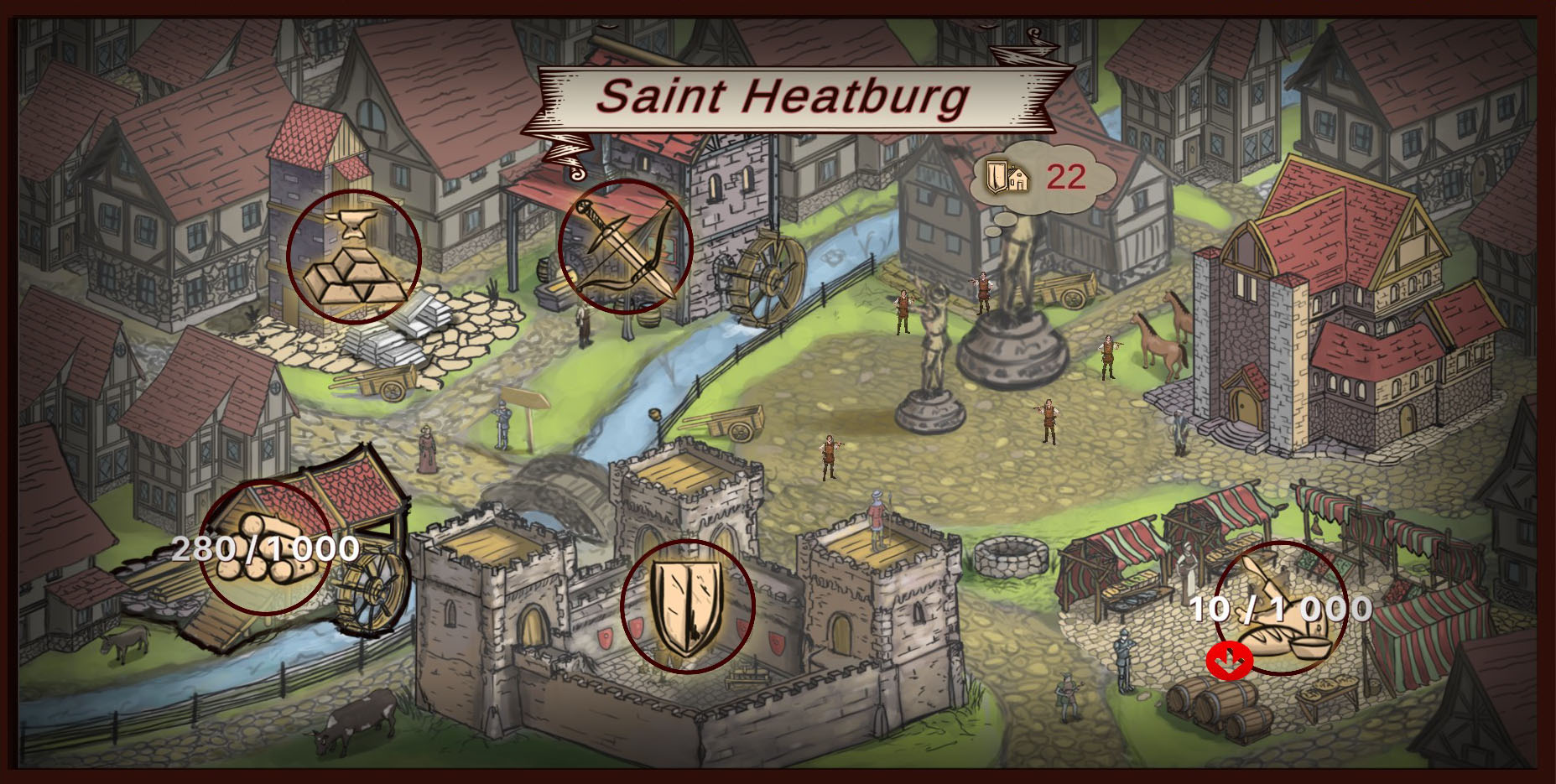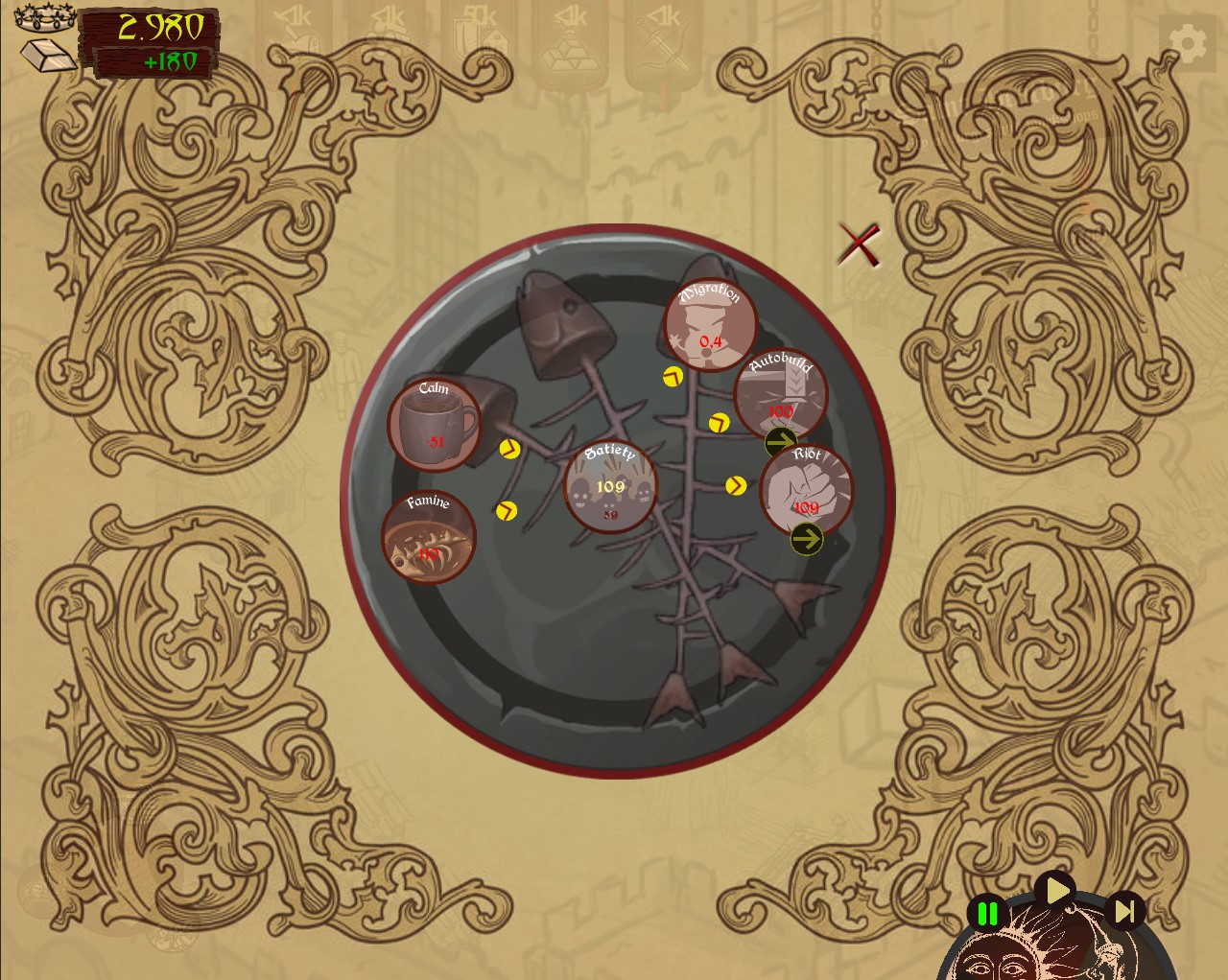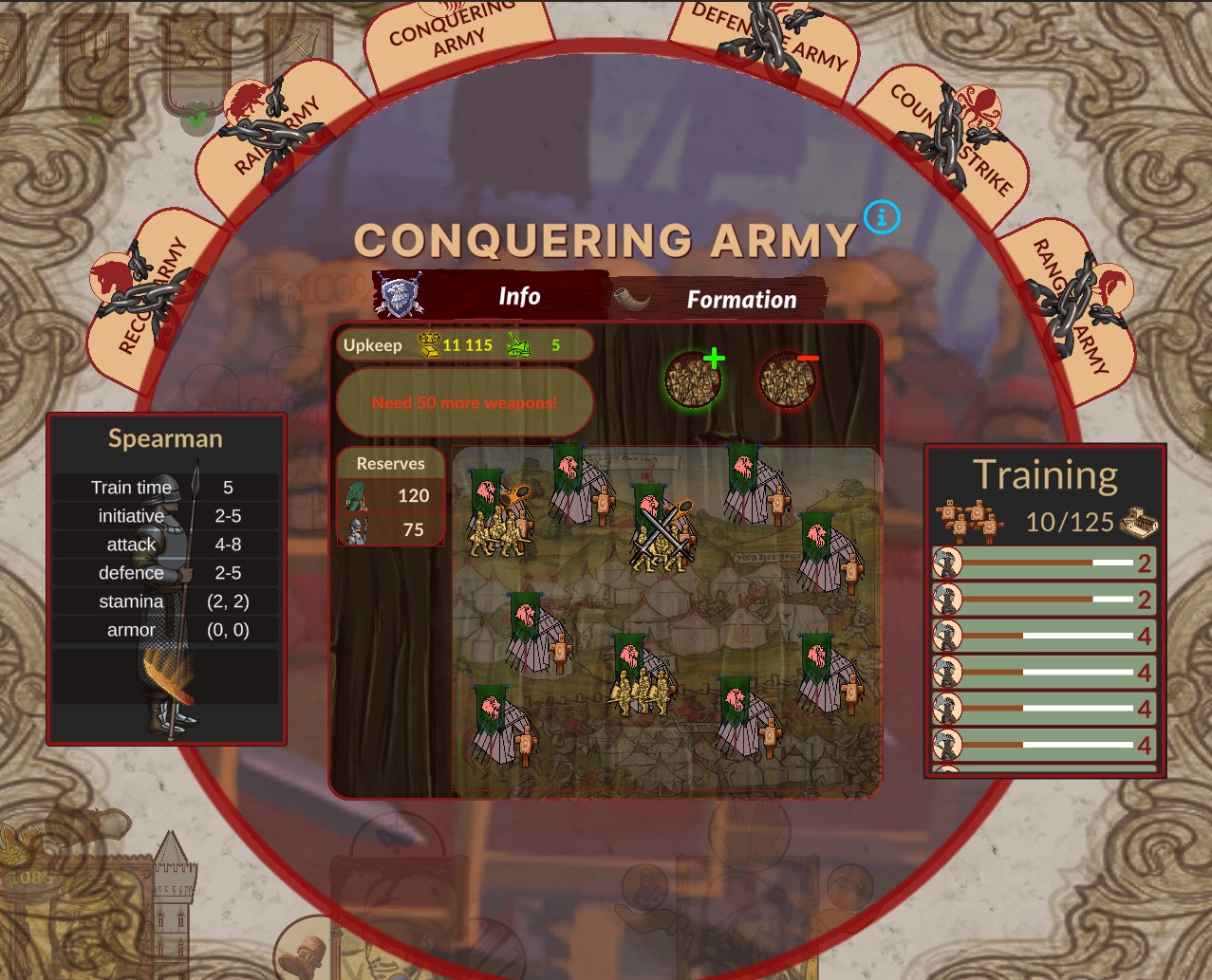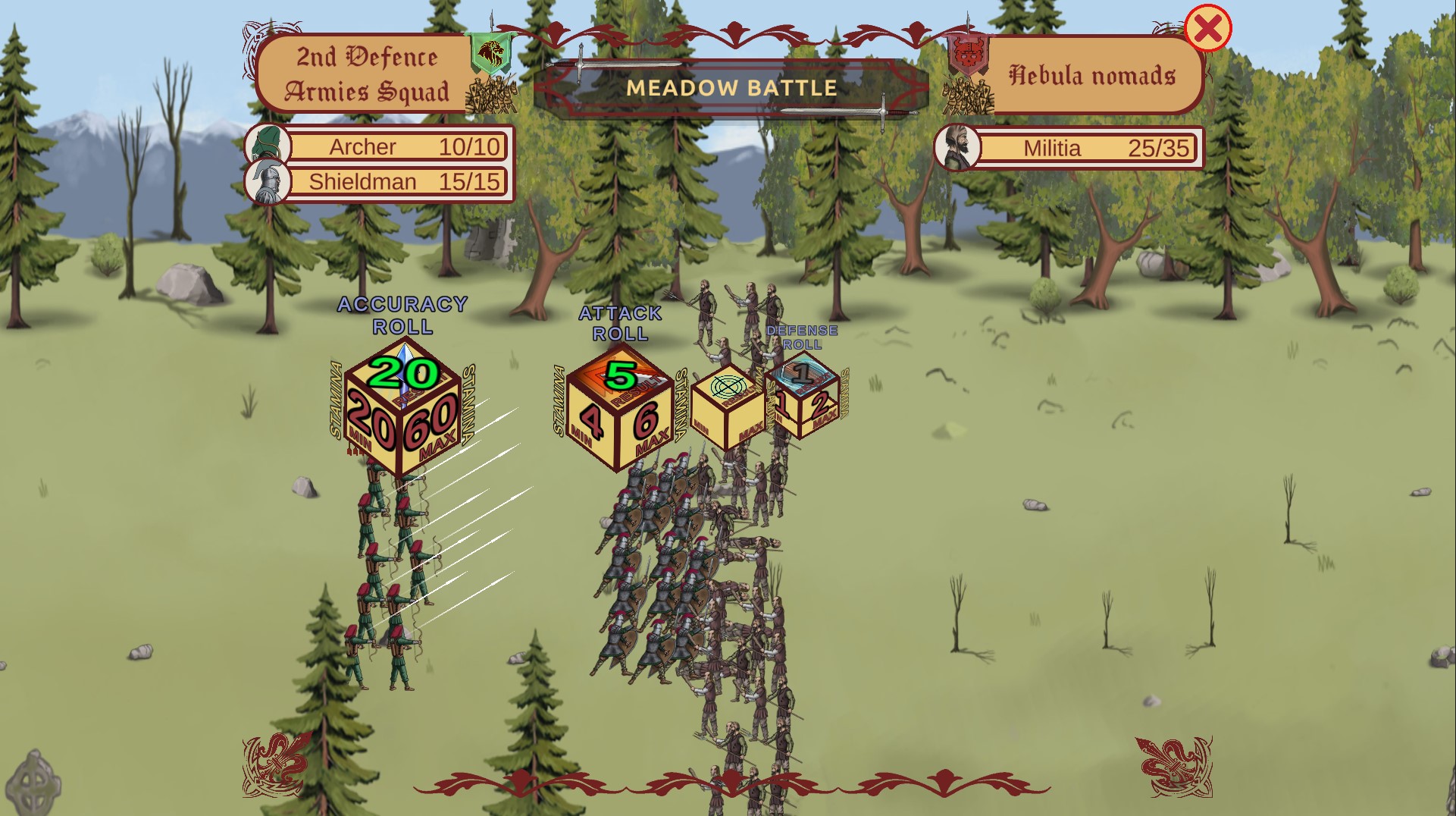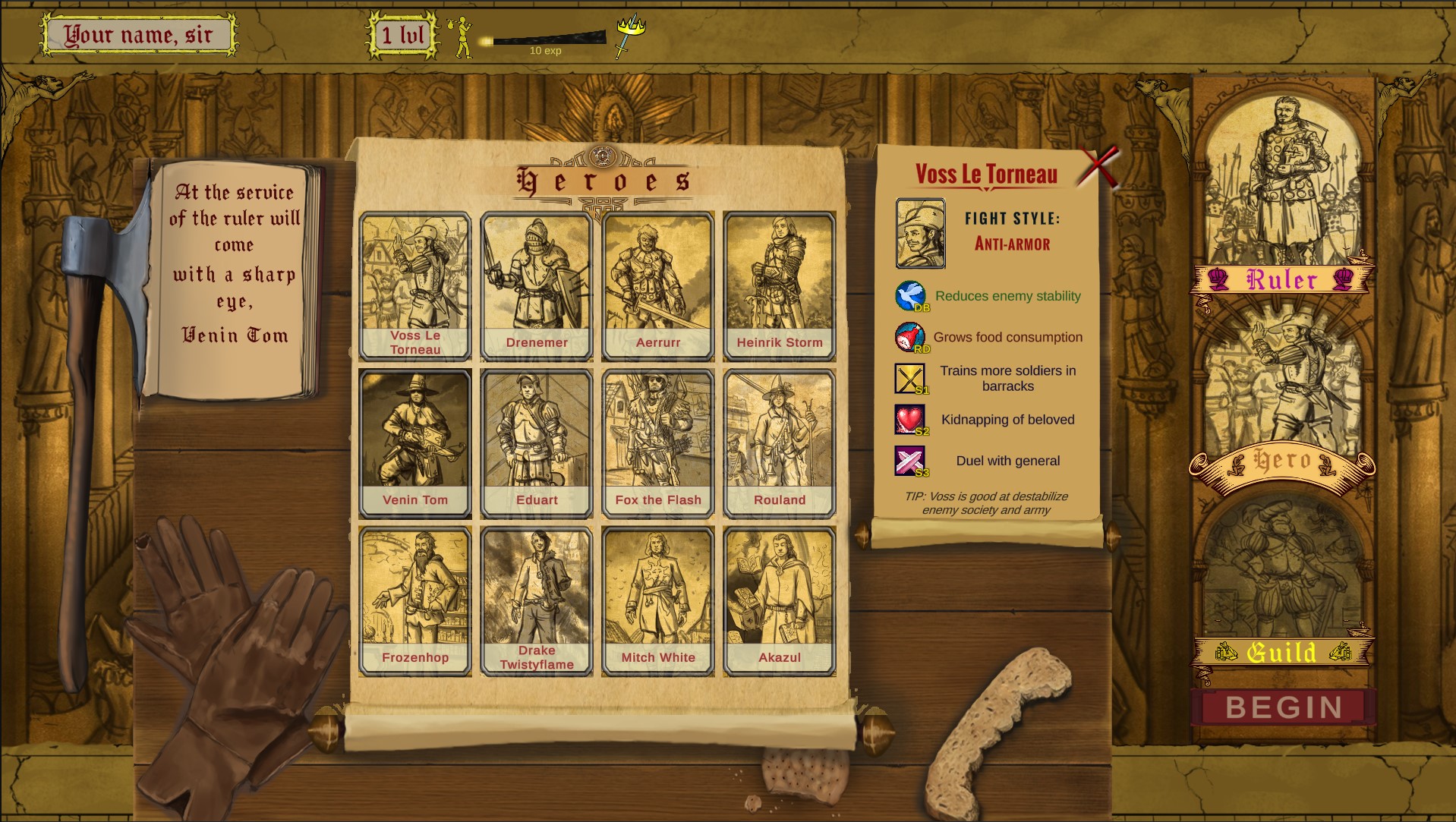The developer of the PC strategy game IamGraf is seeking between 2 to 16 million rubles for refinement and the launch of a demo version
We continue our series of publications about games seeking investments or publishers. Next up is a feature on IamGraf, a roguelike strategy game about county management.
Developer Mikhail Pestov, lead developer of the project, discusses his insights.
Mikhail Pestov
About the Team
The team was formed to create a passion project in 2015, with the first prototype being developed and repeatedly reworked in search of the best game mechanics. The active development phase began in June 2022.
At various times, the team included up to six people. Funding has come from the lead developer's own resources. The main inspiration for the team was the Majesty game series.
About the Project
IamGraf is a two-dimensional, hand-drawn, session-based roguelike strategy game in a one-on-one format for PC, with plans for a mobile port.
The game is being developed on Unity. Currently, all core mechanics are ready. The remaining work includes QA, updating outdated art, and balancing the game for the MVP.
The project will subsequently focus on developing pipelines for adding new content to the game (characters, units, events, etc.).
About Gameplay/Mechanics
Sessions last 15-30 minutes. Players select a team: a ruler, a hero, and a guild, while the opponent does the same.
During gameplay, players issue decrees—such as to the hero, for construction, trading, army formation, etc.
The player's goal is to capture the opponent's castle while defending their own.
Upon victory/defeat, the player's profile gains experience, which can be spent on unlocking perks and new capabilities.
This is not just a roguelike element but also a tool for gradually immersing players in game mechanics, enhancing replayability.
Economics
Contrary to most strategy games where you build once, in IamGraf, players frequently rebuild their cities for two reasons.
Firstly, several identical buildings in one city become a new object—an "industry." This boosts production and generates research points but leads to negative effects. The longer these are ignored, the harder the consequences. For example, massive deforestation around a city can lead to a shortage of lumber even for a single sawmill.
Secondly, provinces' inhabitants have their agendas (food, protection, etc.). If neglected, they'll construct new buildings themselves, potentially disrupting the player's plans.
Politics
In the early stages, the primary "opponent" is the kingdom's own residents.
For instance, there's never the right number of inhabitants. If players attempt to provide ample food, the news spreads to neighboring counties, bringing in refugees who consume more food than produced. Conversely, if food is scarce, residents start filling space with pigsties and gardens. Eventually, when it's time to build, say, a forge, there's no space. Removing farmer-built facilities isn't an option as it causes discontent, possibly leading to revolts.
War
The player has several armies, each with specific duties (attack/defense).
Armies autonomously form squads that act against each other. For instance, the border attack army forms squads to assault another player's borders, countered by the border defense army tasked with protecting those boundaries, while the invasion army, which conquers new cities, confronts city defense armies.
One of the main tasks for players involves troop management.
Players can set formation and composition for each army's squads. Units within squads are balanced on a rock-paper-scissors principle, providing tactical depth. It's possible to anticipate opponents' strategies and deploy counter-units effectively.
Player Team
The player's team consists of three characters: a ruler, a hero, and a guild representative. Currently, there are plans to offer 12 options for each type.
Heroes possess active skills that players can activate with commands. However, their main function is the passive buffs and nerfs, which define the gameplay style for any given match.
In solo play, users can experiment with different combinations to find the most suitable one. In PvP, where players select characters one by one, understanding the meta and considering "picks/counter-picks" becomes crucial.
About the Target Audience
The main audience is fans of mid-core and hardcore strategy games in both the 4X niche (like Stellaris) and management projects (like Oxygen Not Included). The primary link to the latter is indirect management and the enjoyment from issuing commands that the game autonomously assigns to available units.
Battles operate on an auto-battle mode, which may appeal to both autobattler and idle title enthusiasts.
About the Business Model
Following initial funding, a presentable game demo is developed.
According to SteamDB, games similar to IamGraf can sell 30,000-50,000 copies, potentially recouping initial investments multiple times.
At this stage, the focus is on building a stable community. If the demo achieves a good online presence, the project can be significantly expanded with paid DLCs and cosmetic skins.
About Metrics
Closed testing was conducted, revealing audience interest, but unfortunately, the product remains too raw. Preparing a quality build for further testing depends on additional funding.
Seeking Partners
The key is that the partner appreciates the idea and business model. At this stage, all types of collaborations are being considered: from direct investments to equity partnerships.
How to Contact?
- Email: mikhail-pestov@mail.ru
- Telegram: @Mike_Peston
